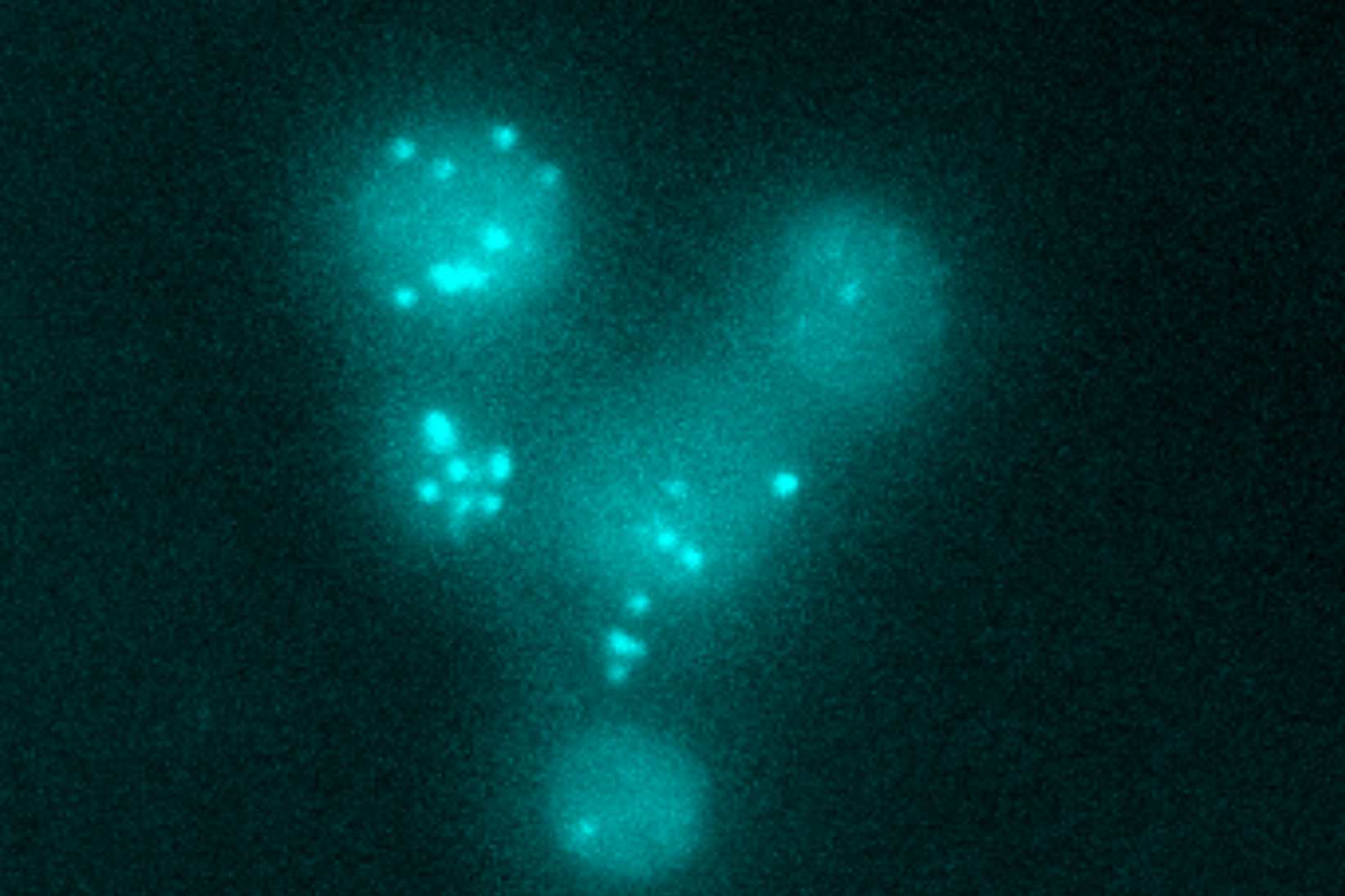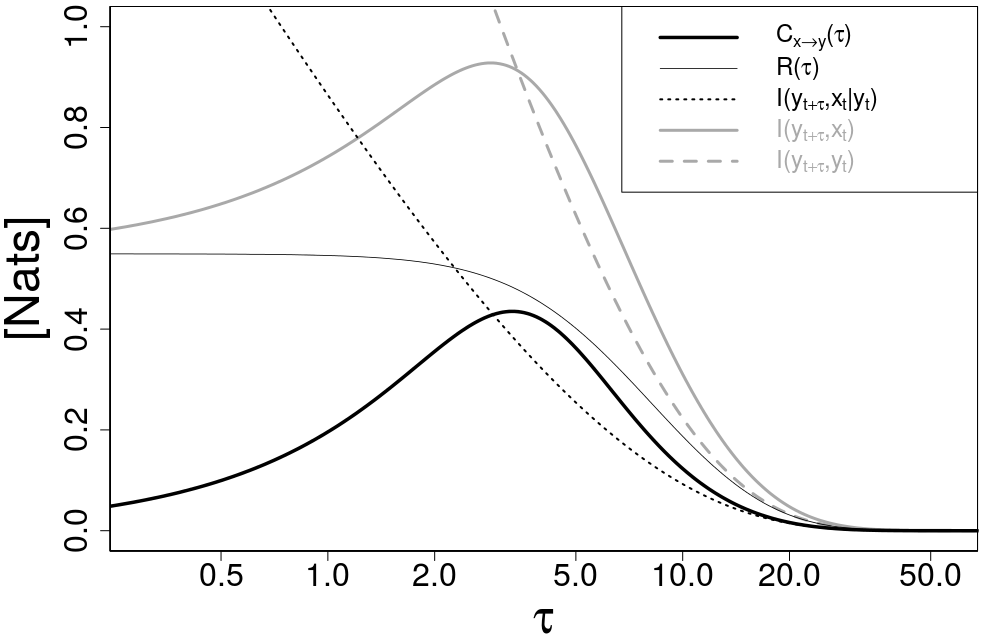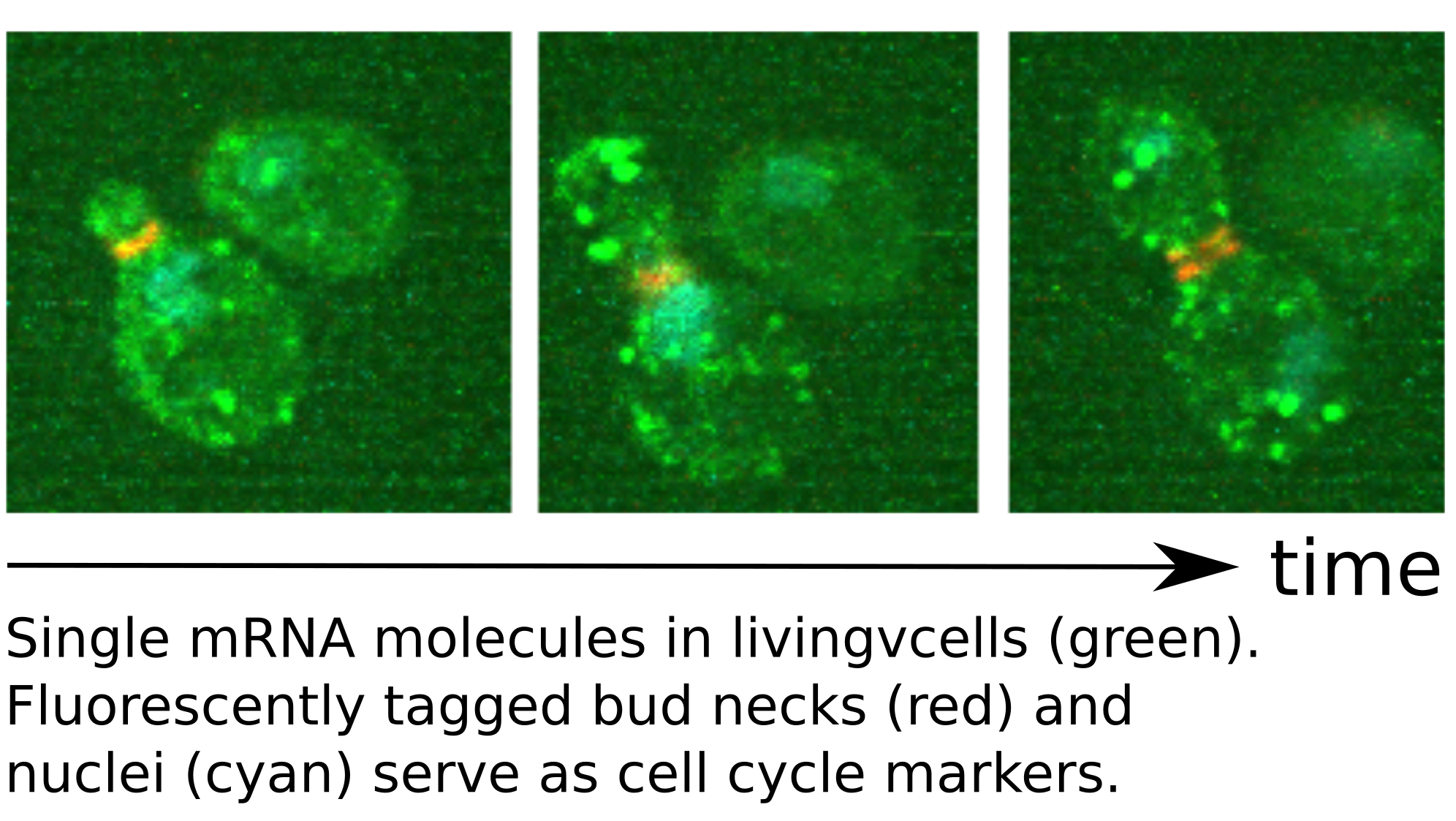Single cells and noise
When molecule numbers get sparse and events rare, underlying assumptions of ODE approaches falter and break down. In this regime, noise plays a fundamental role since it is in the same order of magnitude as the observables. Does noise in these cases exert a biological function? How do living systems filter, or cope with noise? Can we identify the input upstream of a signaling cascade given its output? We investigate questions like these from different perspectives ranging from specific biological systems to general theoretical concepts of information transmission. |
 |
|
PEOPLE
PROJECTS
SELECTED PUBLICATIONS
C Waltermann and E Klipp.
Information theory based approaches to cellular signaling.
Biochim. Biophys. Acta 1810 (10):924–932, October 2011.
URLT W Spiesser, C Müller, G Schreiber, M Krantz and E Klipp.
Size homeostasis can be intrinsic to growing cell populations and explained without size sensing or signalling.
FEBS J. 279 (22):4213–4230, November 2012.
URLT Spiesser, C Kühn, M Krantz and E Klipp.
The MYpop toolbox: putting yeast stress responses in cellular context on single cell and population scales.
Biotechnol. J. 11 (9):1158–1168, 2016.
URLA Auconi, A Giansanti and E Klipp.
Causal influence in linear Langevin networks without feedback.
Physical Rev. E 95 (4-1):042315, 2017.
URLK Stojanovski, T Ferrar, H Benisty, F Uschner, J Delgado, J Jimenez, C Solé, E Nadal, E Klipp, F Posas, L Serrano and C Kiel.
Interaction dynamics determine signaling and output pathway responses.
Cell Rep. 19 (1):136–149, 2017.
URL
FUNDINGBMBF DFG Einstein Foundation |
COLLABORATIONSAlexopoulos, Leonidas and Rozanc, Jan, National Technical University of Athens & Protatonce Ltd (Greece) Kempa, Stefan, MDC Berlin (Germany)
|




